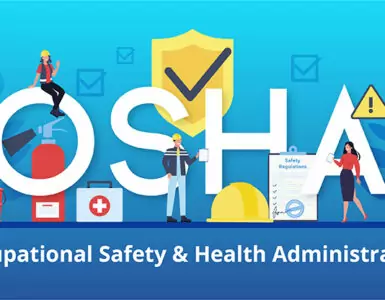OSHA announced the launch of its PSM National Emphasis Program for chemical facilities (Chem NEP). The new Chem NEP expands nationwide a previous 2009 Pilot Chemical Facilities Process Safety Management NEP, which had covered only a few OSHA regions, and established policies and procedures for inspecting workplaces covered by the PSM Standard.
Programmed inspections will begin immediately in all regions. Unlike the Refinery PSM NEP and the Pilot Chem NEP, this directive does not include an expiration date.
Whereas the pilot NEP involved only a few select regions under federal OSHA’s jurisdiction, the new nationwide Chem NEP applies to all OSHA regions. And unlike the pilot chem and refinery NEPs, states are requiredto participate in this emphasis program. If the approved state OSHA plan already has some version of a Chem NEP or wants to implement its own version (within 60 days), the state plan must demonstrate to federal OSHA that its program is at least as effective. Otherwise, the states must adopt this directive.3. Targets for Chem NEP inspections include:
The types of workplaces inspected under the new Chem NEP are similar to the pilot. OSHA will assemble a master list for each region based on employers who: (1) submitted Program 3 Risk Management Plans to EPA; (2) have a NAICS code for Explosives Manufacturing; (3) appear in OSHA’s enforcement database as having been cited in the past for PSM-related issues; and (4) are known to the area office as operating a PSM-covered process. Any workplaces selected for inspection under OSHA’s Site-Specific Targeting Plan, which also happen to operate a PSM-covered process, will be inspected under the Chem NEP directive. Likewise, inspections arising from an employee complaint, referral or incident involving a PSM issue also will be conducted under the Chem NEP directive. Complaints, referrals and incidents unrelated to PSM may still result in an inspection under this directive at the area director’s discretion.
VPP- or SHARP-approved facilities are partially exempt. (They are exempt from programmed inspections, but may be subject to inspection under the Chem NEP upon an employee complaint, incident or referral related to PSM.)
4. The selection of unit(s) includes:
OSHA will attempt to identify “the most hazardous process” as the selected unit(s) for inspection under the Chem NEP. The selection of the unit(s) will be based on the following:
· Quantity of chemicals in the process;
· Age of the process unit;
· Number of workers and/or contractors present;
· Incident and near-miss reports and other history;
· Input from the union or operators;
· Ongoing maintenance activities; and
· 119(o) Compliance Audit findings.
5. Inspection scheduling expectations include:
Every OSHA area office across the country is expected to complete 3-5 programmed Chem NEP inspections per year. The sites selected for inspections will consist of approximately 25 percent workplaces that use ammonia refrigeration and 75 percent all other workplaces with a PSM coverage process.
6. It emphasizes implementation over documentation:
Like the pilot NEP, compliance officers will be focused on implementation of PSM elements in the field rather than relying solely on the quality of the written PSM program.
Like the pilot NEP, the dynamic list-based evaluation under the Chem NEP is a mandatory gap analysis formatted in a series of questions to facilitate evaluation of compliance with various elements of the PSM standard. The list of questions rotates periodically and will not be publicly disclosed. The questions are accompanied by guidance for CSHOs as to what documents to request, interview topics and questions to cover, and potential citations to issue. Each dynamic list includes 10-15 primary and 5 secondary questions. Questions are designed to elicit a “Yes,” “No” or “N/A” determination of PSM compliance, and any “No” will normally result in a citation.8. The following documents and presentations will be requested:
During a Chem NEP inspection, employers will be asked to produce the following documents:
· List of PSM-covered processes;
· List of units and maximum intended inventories;
· Three years of OSHA 300 logs for employer and contractors, and contract employee injury logs;
· Summary description of PSM program;
· PFDs, P&IDs, Plot Plans and electrical classification drawings for the selected unit(s);
· Description of process and safety systems, safe upper and lower operating limits and design codes and standards for the selected unit(s);
· The initial PHA and the most recent Redo or Revalidation for the selected unit(s) (including PHA reports and worksheets, recommendations and action items and schedule for addressing and completing recommendations and action items); and
· PSM incident reports for the selected unit(s).
· Overview of the company’s PSM Program and how it is implemented;
· Identify personnel responsible for implementing each PSM element;
· Description of records used to verify compliance; and
· Process description for the selected unit(s).
As we reported about the refinery NEP, OSHA was turning a single issue into multiple violations. The agency has memorialized this practice in the Chem NEP directive. The directive advises CSHOs that a single valve change, for example, could implement 11 different PSM elements, and each should be considered for individual citation items.
Under the pilot NEP, some citations required employers to simply certify that abatement had been completed. Under the new Chem NEP, however, abatement verification and documentation is now mandatory. The NEP also directs CSHOs to review past PSM-related citations issued to the same employer going back 6 years, and identify potential failures to abate and possibly repeat and willful violations.




